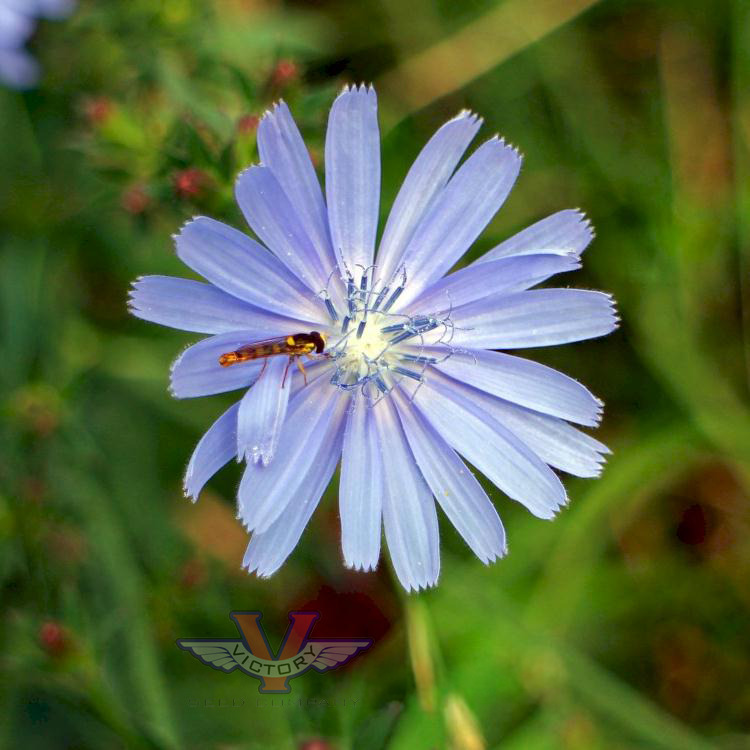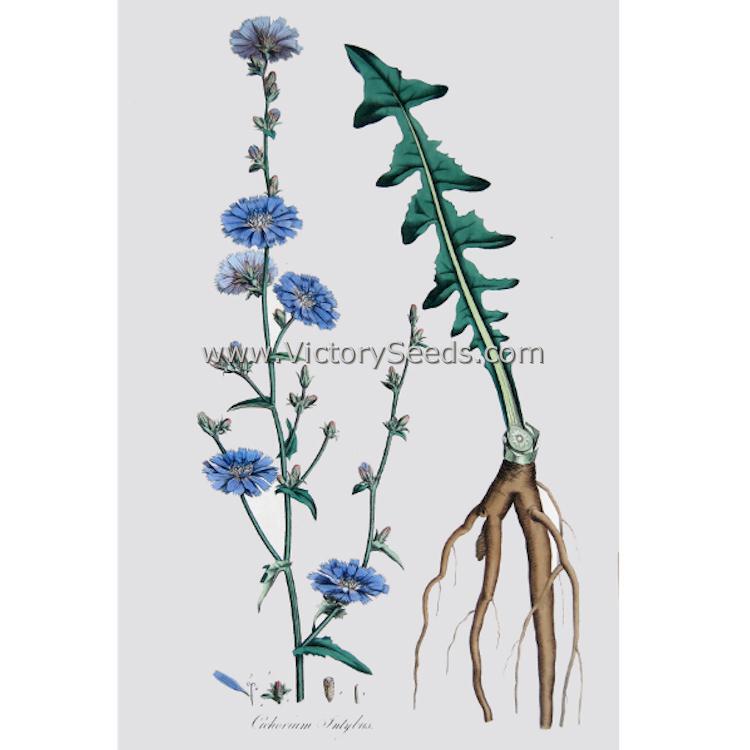



Chicory
Cichorium intybus
Price: $2.95
SKU: 4000091
Chicory
Cichorium intybus
Cichorium intybus
A native of the British Isles, chicory, also known as "Succory," has been naturalized all over the world. It flowers at two to three feet tall. This is the wild form of the plant, and while no longer generally cultivated as a leafy green vegetable, it certainly can be eaten. Prior to the development of modern endive and chicory cultivars, the Romans, for example, ate it as a vegetable as well as in salads. Many ancient writers, including Horace, Virgil, and Pliny, describe it being used in this way.[1] Some say that they are tastier than dandelions as a fresh salad green.
Primarily grown in North America as an ornamental, the roots of this plant have been used for centuries in Europe to brew a beverage similar to coffee. For this purpose, its roots are harvested, washed, cut into chunks, dried, and then roasted. It is then ground and used as either a coffee amendment, or a substitute. Interestingly, the process of roasting converts one of its many compounds (e.g. inulin) into oxymethylfurfurol, which give the beverage brewed from it a coffee-like aroma.[2]
It is said that when added to coffee, it acts as a counter-stimulant to coffee's caffeine excitable (jitters) properties. Research indicates that this is due to the compounds lactucin and lactucopicrin, which have a sedative effect on the central nervous system.
Chicory, with sugar beet and rye was used as an ingredient of the East German Mischkaffee (mixed coffee), introduced during the "coffee crisis" of 1976 to 1979. Some beer brewers use roasted chicory to add rich flavor to their stouts. USDA Zones 3-9. Perennial. Each packet contains 0.25 gram, which is approximately 200 of seeds.
A poultice of its bruised leaves was historically used to reduce inflammation and swelling.[1]
Customer Reviews:
Do you have experience with this one? 📝 📣 Write a review!
No reviews have been posted yet.







